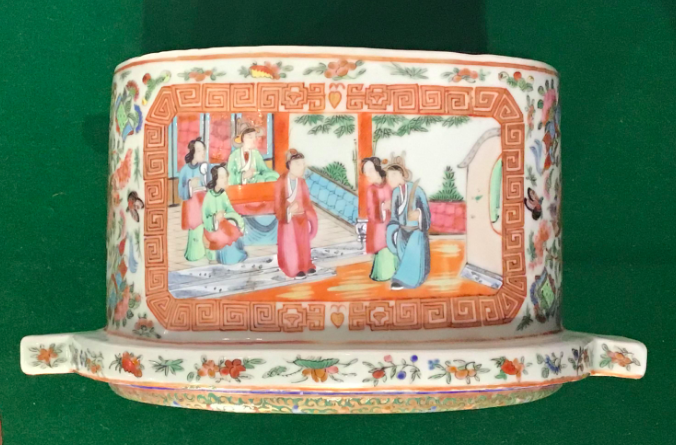A fine English clock in a Chinese Porcelain Case
A fine English clock in a Chinese Porcelain Case
An extremely rare Combination of a fine English clock in a Chinese Porcelain Case,
circa 1840.
The movement by ‘Barrauds & Lund, Cornhill, London”, the case of Canton Famille Rose, Qing dynasty, Daoguang period (1821-1850).
The clock-case is enamelled in vibrant colours with the sides decorated with Court scenes depicting noblemen and ladies at leisure as shown below.
From 1757, and during the following fifty years, more than two thousand clocks of European (notably English) manufacture were exported to China. At the same time workshops based in Canton produced numerous clocks based on the European models, distinguished by their use of symbols relating to Chinese mythology and tradition.
However, this case, which is one of only three known to date, was undoubtedly made for export to Europe. This is supported by the way in which it was created. Because of the difficulty in drilling Chinese hard paste porcelain (particularly at this date), the necessary holes for mounting the movement, fitting the door and attaching the feet were clearly pre-made before the porcelain was fired in the kiln, and laid out for a typical clock movement of the period. The fact that the decorative glaze flows into these holes confirms this. Interestingly Barraud & Lund later had an office in Calcutta due to their thriving business in the East.
POA














